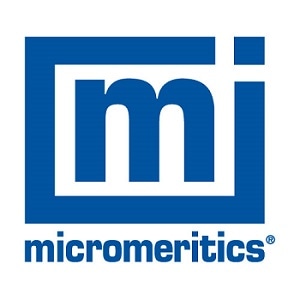The Brønstead acidity of catalysts, such as zeolites, is of keen interest due to their influence on the kinetics of reactions. Consequently, characterizing such sites is very important and is often carried out in accordance with the ASTM D 4824 ammonia chemisorption method.
An alternative, but comparable characterization method involves pulse chemisorption of propylamines and subsequent temperature-programmed desorption (TPD) combined with a mass spectrometry analysis of propylene (Figure 1). The AutoChem analyzer equipped with the mass spectrometer and vapor generator accessories can be used to perform a complete characterization analysis.
.jpg)
Figure 1. The amine reacts with acid sites to decompose into propylene and ammonia via a mechanism analogous to Hofmann Elimination.
Materials
This application used a zeolite containing hydrogen cations with a silica-to-alumina ratio of 60:1. Propylamine ( > 99.0% GC) and isopropylamine (> 99.5% GC) were used, separately, as reagents. For calibration purposes propylene (> 99%) was used.
Preparation
Various cations, including hydrogen and ammonium can be present in a Y zeolite sample. It is possible to convert cations in these compounds into hydrogen cations using a temperature ramp. The sample was heated first to 500 °C in an inert helium environment at a rate of 10 °C/minute for activation, and then cooled down to the analysis temperature of 200 °C.
Analysis
Once the Y zeolite sample was activated, the next step was pulse chemisorptions, where the sample was dosed with 10 injections of propylamine vapor (to ensure that the sample was saturated) using an inert gas (helium) flowing through a 5-cm3 loop.
A temperature-programmed desorption (TPD) is the final step, where propylene (the product of interest) was scanned using the mass spectrometer. Data collection was carried out during a temperature ramp from 200 °C to 500 °C.
Data
A known volume of propylene (Vcal) was injected through the septum using a high-precision syringe to calibrate the mass spectrometer in order to acquire quantitative data. The AutoChem peak-editing software can be used to obtain the peak area of the mass spectrometer signal.
Injections may be made until peaks are similar in area so that the calibration accuracy can be improved. The areas are then averaged to obtain a general conversion factor between actual gas volume and mass spectrometer peak area, allowing the calculation of the acidity of zeolites. An example of this procedure is illustrated in Figure 2.
.jpg)
Figure 2. Example of mass spectrometer signal during an area-volume calibration.
Additionally, Figures 3 and 4 reveal that a thermal conductivity detection technique includes residual ammonia and amine from the chemisorption, while mass spectrometer detection separates the propylene signal, enabling the concentration of acid sites to be determined.
.jpg)
Figure 3. Thermal conductivity data from the AutoChem.
.jpg)
Figure 4. Mass spectrometer peak results.
Once the peak area (Apms) is obtained by integrating the propylene signal from Figure 4, the concentration of acid sites (Nas) can be calculated using the following expression:
.jpg)
Below are the estimated values corresponding to the data in Figure 4. The concentration values are presented in units of micromoles of acid sites per gram of zeolite analyzed.
Nas isopropylamine = 676.31 µmoles/g
Nas propylamine = 448.00 µmoles/g

This information has been sourced, reviewed and adapted from materials provided by Micromeritics Instrument Corporation.
For more information on this source, please visit Micromeritics Instrument Corporation.